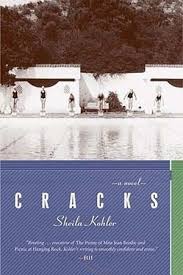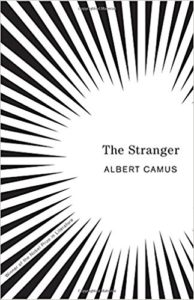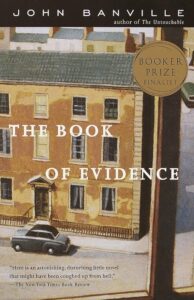The jailhouse confessional is a form that has always intrigued me—an accused recounting his crimes, after the fact—seemingly to atone, but more often to rationalize, to elide, to recast themselves as the victim. The jailhouse confessional implicates the reader, putting them in the position of adjudger of facts—a jury—weighing the culpability of the accused. It’s a form of direct address that draws the reader in; it’s the perfect setup for an unreliable narrator.
In writing my last novel, The Vixen Amber Halloway—which involves the spiral of a woman from seemingly sane to increasingly deranged—I knew I wanted to use this structure. By definition, there are two timelines in a jailhouse confessional—the present day, and the past in which the crimes took place. That temporal distance creates friction—between the reconstituted memory and what actually occurred—putting the reader in the position of sorting out the contradictory evidence, reconciling the facts—just like a jury.

Lolita, by Vladimir Nabokov
The most iconic example of the jailhouse confessional is Vladimir Nabokov’s Lolita. Humbert Humbert is, of course, hopelessly enamored of Lolita. But the story begins with Humbert Humbert addressing the winged seraphs, those who would sit in judgment of him; he notes, “you can always count on a murderer for a fancy prose style.” We are both seduced by his prose and repelled by him, but we cannot stop reading! Beneath the razzle-dazzle of his words, there are moments where the gravity of his crimes is evident (her “sobs in the night” the moment he “feigned sleep”; “the cars, and the bars, and the bar men, and everything soiled, torn, dead”). There is irony in the fact that he loses Lolita to someone more monstrous than he—Quilty, the bald villain who trails them in his red coupe, who serves as Humbert’s diabolical doppelgänger. By the end, Humbert Humbert has succeeded in making us sympathize with him, makes us (almost) believe him, when he pines for his immortal nymphet.

Cracks, by Sheila Kohler
Cracks, by Sheila Kohler, is a marvelous example of an apologia for crimes earlier committed. The novel opens as former students of a girls’ boarding school in South Africa are returning for a reunion. We learn that there is a classmate who is no longer there; that there is a teacher who left under hazy circumstances. We realize that something is amiss, that something occurred that the women are trying to cover up. The effect is magnified in Cracks because there are multiple voices—the chorus of schoolgirls, each with her own perspective on the ancient crime. Like Nabokov, her protagonists lure us in; we want to believe them, to absolve them. The two-storyline setup allows Kohler to prolong the suspense, to reach a feverish crescendo, before we learn the truth—if there is such a thing—of what actually transpired.

The Stranger, by Albert Camus
The Stranger, by Albert Camus, involves a protagonist, an anti-hero, who commits an inexplicable crime and is called to account. We feel sympathy for him as the novel begins—the first line maman est morte—his mother is dead—and his journey to bury her. Yet weeks later, the impassive, detached Meursault kills an unnamed Arab man. The second half of the book focuses on his prosecution for the crime, following which he has an epiphany regarding the “benign indifference of the universe.”

Schroder, by Amity Gaige
Schroder, by Amity Gaige, is narrated by an unsavory, unreliable narrator who has kidnapped his daughter and who we understand to have a checkered past—details that are woven into the present narration of the father and daughter road trip. Though he, like Humbert Humbert, is in many ways monstrous, we sympathize with his plight as a father. Gaige shows us, through flashes, how diabolical he really is. The destabilizing dynamic between the character as he portrays himself and the character as he actually is—inherent in the jailhouse confessional/dual storyline structure—keeps the reader in a state of suspense: believing, disbelieving, reconsidering, reevaluating, reinventing.

Book of Evidence, by John Banville
The novel is narrated by the privileged and dissolute Freddie Montgomery, who recounts his life and the events leading up to his arrest for the murder of a servant on an Irish estate. He ends up going on the lam, hiding out in the home of a family friend. As in the best jailhouse confessionals, Freddie simultaneously explicates while casting doubt on his story, repelling and yet inevitably seducing the reader. The novel was based on the infamous 1982 case of murderer Malcolm MacArthur, who killed a young nurse and then sought refuge in the home of the then Irish attorney general.
Bonus Confessional Novels:
What Was She Thinking: Notes on a Scandal, by Zoe Heller—the ultimate unreliable narrator
The Confessions of St. Augustine—the original confessional form
Crime and Punishment, by Fyodor Dostoevsky—a suspenseful tour de force inside the mind of a criminal alienated from society
***


















